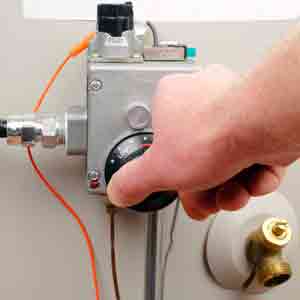Should You Drain Your Hot Water Heater? Steps On How…
If you ask a variety of plumbers why you should drain your water heater, you will most likely get a variety of reasons. But they all come down to one basic reason. Sediment. All water contains some degree of minerals, dirt or debris.
 This makes its way into the water heater of your Easton home as well. Although the amount of debris may vary, over time all water heaters will accumulate sediment.
This makes its way into the water heater of your Easton home as well. Although the amount of debris may vary, over time all water heaters will accumulate sediment.
Although there is agreement that water heaters need to be drained, there is not agreement as to how often this should happen. The most popular suggestions are semi-annually or annually. The best way to find your optimum timeframe is to drain your tank every six months.
If there is not a lot of sediment you probably can push draining to once a year. If there is an alarming amount of sediment after 6 months, you may want to try it quarterly or every 4 months instead. Tailor your schedule to combat the elements in your area.
Efficiency
Sediment in a water heater can affect the efficiency in which it operates. A buildup of sediment can clog the drain valve. The more sediment sitting on the bottom of the tank, the less room there is for hot water. Although it is hard to imagine, over years of accumulating sediment, it is possible to have quite a buildup. A home that runs short of hot water on a regular basis should consider draining their hot water heater.
Preventing Damage
Replacing an old water heater may not be the most expensive repair you’ll ever make. However, repairing the damage caused by a leaking water heater may be. Annual maintenance such as flushing your unit can prevent rust building up in the unit.
This can extend the life of your water heater. Just the act of tending to the unit may alert you to any small leaks or drips that may be forming, giving you time to make a planned repair or replacement.
Steps to Draining Your Water Heater
Always keep safety in the forefront when draining the water heater of your Easton home. Turn off the power to the unit, either the electric shut-off or the gas supply.
Look for the valve located above the unit which supplies the cold water into the tank. Turning that valve stops water from being able to refill the unit. Proceed to the closest sink, turn on the hot water and let it run until the stream stops.
Along the bottom of the water heater, you will find another valve, called the drain valve. If your water heater is near a drain or sump pump, attach a hose to the drain valve and run the hose to the drain. If there is no drain, run the hose into a bucket. Let the water run until it runs clear. It is not necessary to drain the entire tank.
When the water is clear again, close the drain valve. Turn on the cold water supply to refill the water tank. Once it is full, restore the power to the unit.
For help with your water heater or any plumbing issues in your Easton, PA home, contact Ameriserve at (610) 258-2591.
